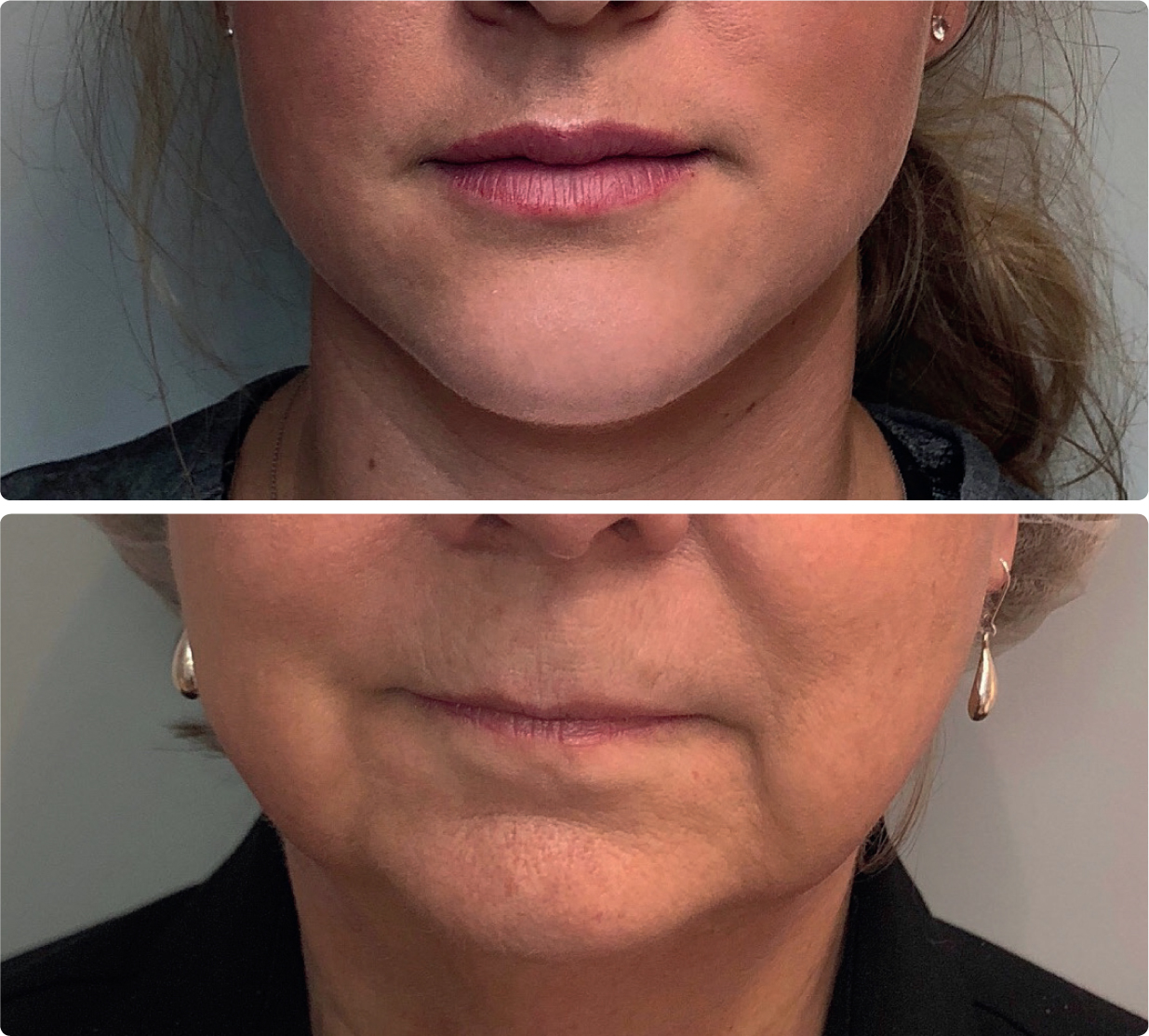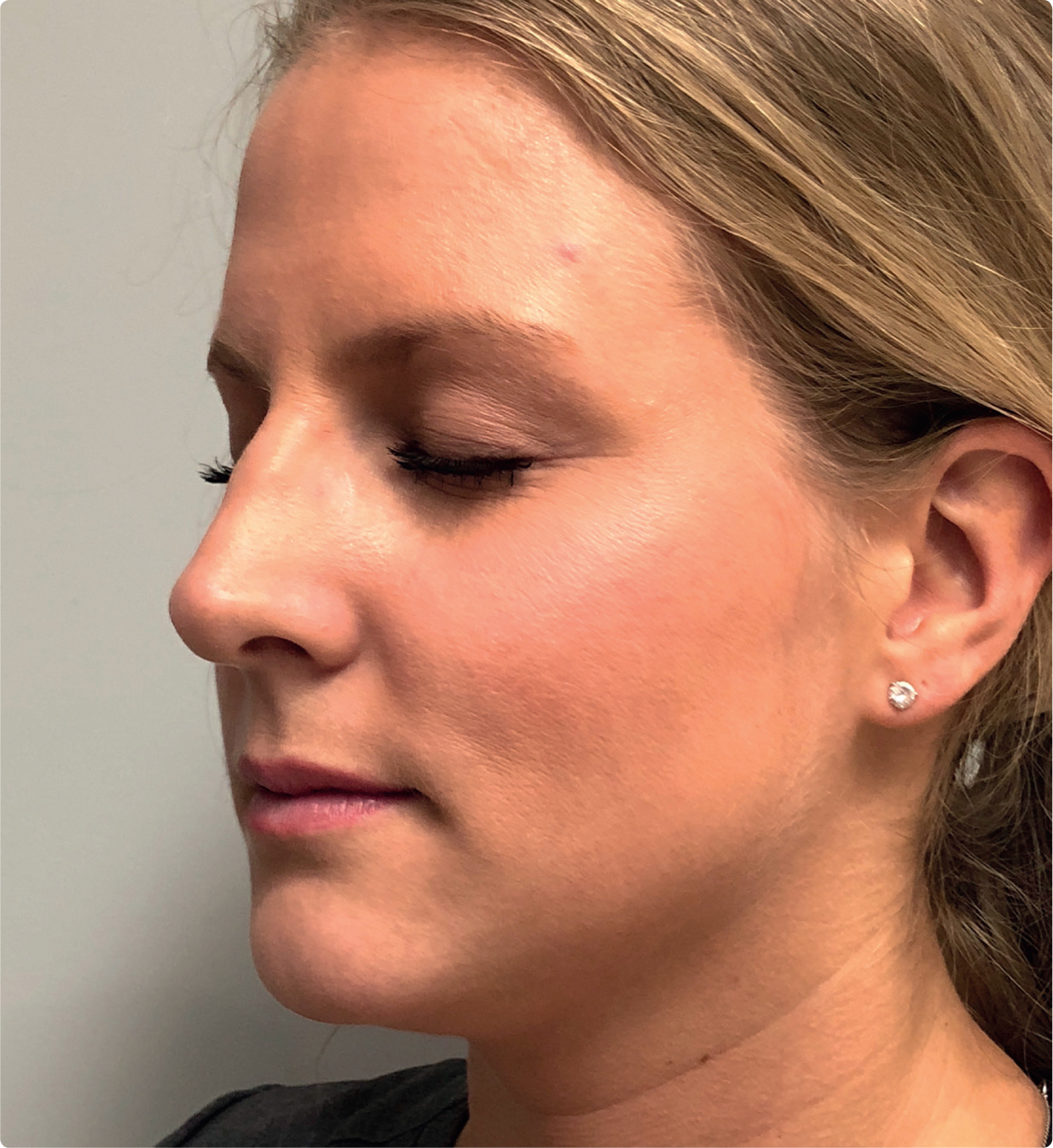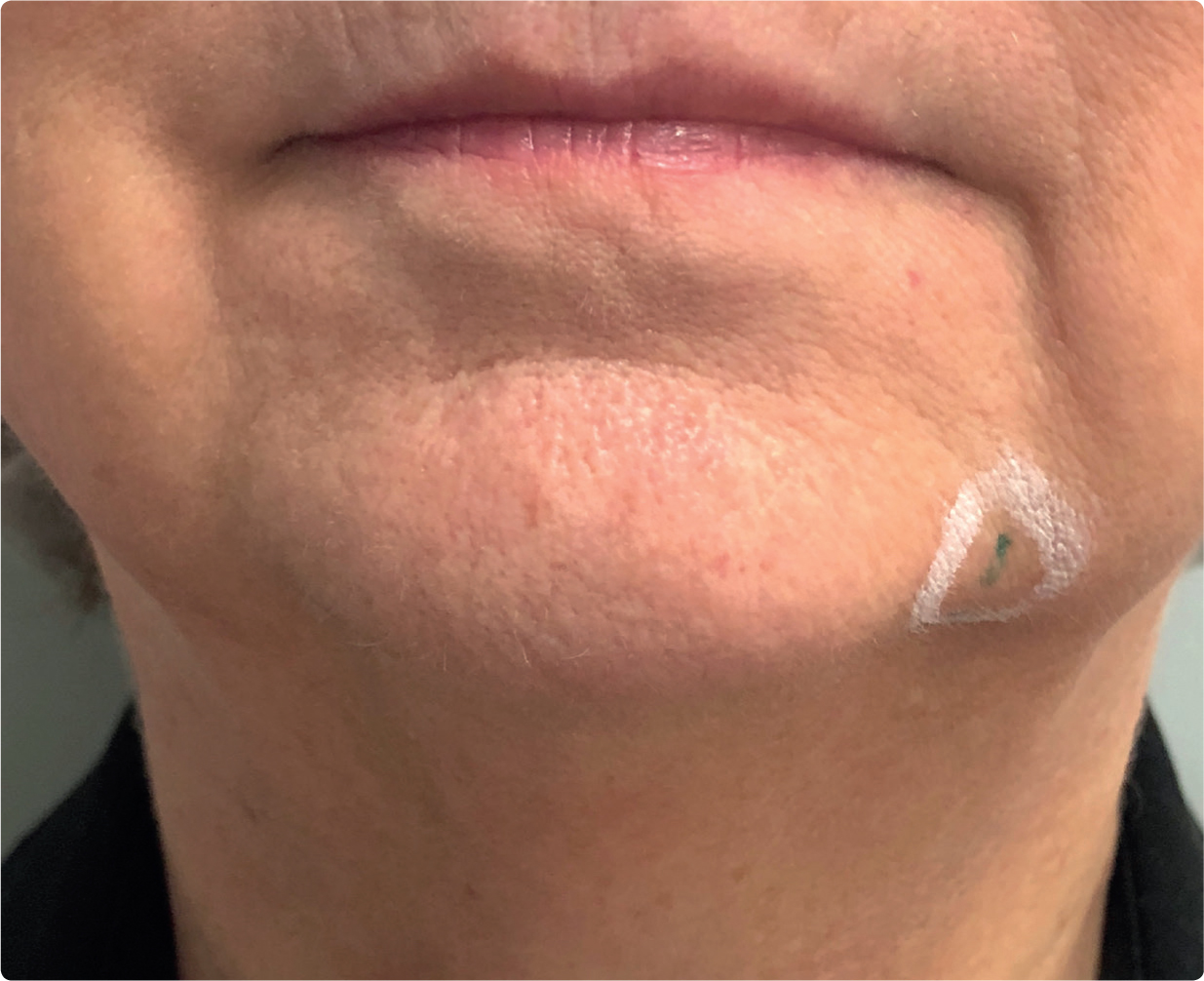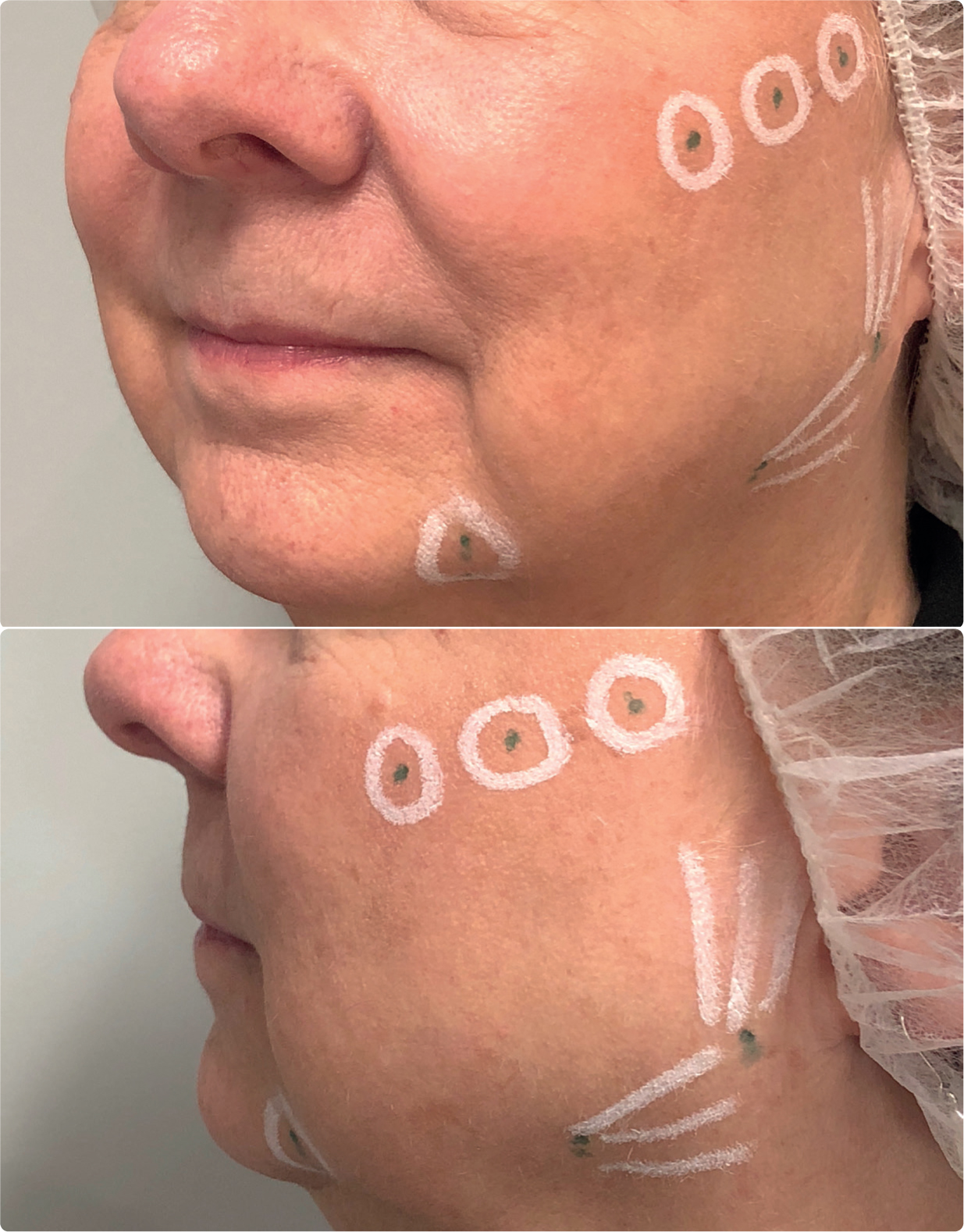
The use of soft tissue fillers to restore volume to the face and tackle the signs of ageing continues to be on the rise. According to the American Society of Plastic Surgery (ASPS), injectable fillers were used in 2.69 million procedures in 2017 (ASPS, 2018). This is up three percent from 2016 (ASPS, 2018). Aesthetic nurses have become much more skilled in replacing volume to restore the balance of the face, rather than filling creases. Many advances were made in the field with the understanding of midface augmentation to replace volume lost in the lateral malar and apex regions of the cheek to lift the nasolabial fold and lower face area. However, more recent understanding of the effects of restoring the jawline have given consumers a much higher rate of satisfaction in nonsurgical facial rejuvenation.
The ageing process
In order to understand how to restore this natural balance, it is important to understand the changes that are happening in the ageing face. The intrinsic factors that contribute to the ageing process are ones that show the most effect on the lower face and jawline. The ageing craniofacial skeleton is not only a result of bone atrophy, but also of the changes in the height and width of the face, as some bones expand and some lose mass over time. An increase in facial width and depth may be noted due to changes in the maxilla and mandible, as is a decrease in facial height. Mandibular changes are noted with any loss of teeth which causes marked resorption of the alveolar ridge and shape, and projection of the chin will also change with age. There is a general coarsening of mandibular bony protuberances at the points of insertion of masticatory muscles and a general softening elsewhere.
With progressively increasing skin laxity, depletion of malar and perioral fat deposits, and resorption of alveolar bone, a relative excess of skin occurs in the ageing lower face, leading to loss of definition of the jawline. Loss of masseteric ligament support allows descent of facial fat to the mandibular border, leading to the formation of facial jowls. As the lateral projection of mandibular fullness dissipates, the angle of the mandible appears to merge from the buccal region into the neck. In the chin, loss of lateral and inferior volume results in relative protrusion of the central chin, whereas lateral mental atrophy results in ptosis of the lateral chin, which can create the impression of chin widening when viewed from the front (Figure 1).

As the subcutaneous fullness of the mandible recedes, the fat of the jowl, which was previously concealed by the surrounding soft tissues, is revealed. Ptosis of the unsupported skin, chin pad, and facial portion of the platysma muscle, coupled with the downward pull of the platysma muscle, leads to the development of the characteristic jowling, or ‘turkey neck’ deformity (Coleman and Grover, 2006). Despite this big picture shift in volume towards the lower face with ageing, volume must be added to the jawline and lower face to recreate balance (Buckingham et al, 2015).
Restoring the balance
Aesthetic practitioners are charged with restoring the natural balance of the face. Over the past decade, hyaluronic acid injectable dermal fillers have become the most popular agents for soft tissue contouring and volumising. Hyaluronic acid fillers are characterised by most of the properties that an ideal dermal filler should have, due to hyaluronic acid's unique chemical–physical properties, biocompatibility, biodegradability, and versatility. Therefore, hyaluronic acid dermal fillers have revolutionised the filler market with a high number of products, which differ in terms of hyaluronic acid source, cross-linkage (agent and degree), hyaluronic acid concentration, hardness, cohesivity, consistency, inclusion or lack of anesthetic, indication, and longevity of correction (Fallacara et al, 2017).
Patient consultation and assessment
When considering dermal fillers to restore the jawline, providers should thoroughly review the medical history of the patient, including medical conditions, medications and herbal supplements, previous treatments and reported outcomes, allergies, incidence of anaphylaxis, pregnancy, breastfeeding, and any upcoming dental or medical treatments. Other cosmetic treatments, medical or dental treatments should be avoided for 2 weeks to decrease the likelihood of complications (De Boulle and Heydenrych, 2015). Patients should be informed that any medications or supplements that may cause the blood to thin must be avoided one to two weeks before treatment if not medically necessary, in order to avoid unnecessary bruising (Hamman and Goldman, 2013).
Assessment of the client's bone structure, dental issues (including irregular alignment and tooth loss) and general asymmetries of tissue is of utmost importance before beginning any augmentation procedure of the face (Srivastava et al, 2018). All areas of the face should be assessed for volume loss. Repairing the jawline without proper attention to the upper and midface may result in a less than optimal result. Examining, photographing, documenting and discussing any preexisting uneven areas will avoid difficult conversations after treatment and give the practitioner a full understanding of how to perform the procedure. Understanding previous cosmetic filler, plastic surgery treatments and prior injuries will help the provider understand alterations in baseline and scar tissue issues.
It is also important to properly manage patient expectations. Understanding why the client wants to undergo treatment, having the client understand the risks and realistic outcome of the procedure and choosing the best product for the job ensures a satisfied client who refers and returns to the practice (Mandy, 2009).
Technique
Choosing the correct product is important in having the desired effect from soft tissue filler. When volumising or augmenting, more dense fillers are required to give noticeable effect (Vedamurthy et al, 2010). Hyaluronic acid fillers are particularly desirable due totheir ability to be broken down, which is essential in the event of accidental occlusion or misplacement (John and Price, 2009). In augmenting the jawline, we must recognise that a youthful jawline is characterised by a straight line from the chin to the mandibular angle (Figure 2). In order to restore this youthful appearance, the injector must address the pre-jowl sulcus, which is the triangular area from the mental foramen to the mid-lateral zone of the mandible. The jowls are located just behind the sulcus and is the area where soft tissue is lax along the mandibular line.

When using the validated scale of lower face ageing, grade 1 and 2 jowling is treated by using a hyaluronic acid product with a high G prime and injecting deep boluses. The needle is positioned at the mandibular line in the pre-jowl area. It is important to aspirate prior to injecting. Slow perpendicular injection is performed with a few boluses of the filler injected on the periosteum of the mandible (Figure 3). Special attention should be made to the area just below the mandible, as there is often a significant depression.

In cases of grade 3 and 4 jawline ageing, post jowl concavity, mandibular angle and sometimes zygoma must be addressed for lifting effect (Carruthers and Carruthers, 2010). For post jowl concavity correction, injection is achieved by injecting immediately lateral to the sulcus. When injecting with a needle rather than a cannula, it is suggested to pinch the skin to remain in the immediate subdermal plane to avoid the facial artery. The green dots in Figure 4 represent the areas of needle insertion. The white lines represent fanning technique injection in the area. The same technique is used to provide more definition to the mandibular angle. While this should provide a smoothing and lifting effect to the lower third of the face, attention must often be given to the posterior cheek and malar area to lift the middle third of the face and give the overall lifting effect that would satisfy the patient (Yutskovskaya et al, 2017). Again, the green dot represents the perpendicular needle insertion, the white circle represents the area into which the small bolus of material should be placed in order to lift the midface (Figure 4).

In many cases, injectable filler alone will not provide enough change to correct the sagging jawline, and other treatment modalities must be considered. Often neuromodulators, lasers, ultrasonic, or absorbable thread technologies are used to provide even more lifting and tightening effects. Many practices create protocols involving several of these therapies to provide a comprehensive approach to nonsurgically tightening the jawline (Burns et al, 2007). There has been some encouraging research that suggests that using intradermal radiofrequency treatments, such as Fractora by InMode, to areas of the face that need volumising before injecting with hyaluronic acid fillers may provide more long-lasting, volumising results (Choi et al, 2013; Ko et al, 2015).
Conclusion
Giving ample consideration to the jawline of the ageing face is imperative to creating a more balanced face and satisying the client. Today's clients are more educated and informed about options for overall face rejuvenation and understand the nonsurgical choices available to create a stronger and more youthful jawline. Injectable fillers are one of the most important aspects of providing this result for these patients. With the abundance of literature on safety and success with hyaluronic acid in jawline rejuvenation, it stands to reason that aesthetic practitioners would want to understand, utilise and become experts in adding this treatment option to their armamentarium.


